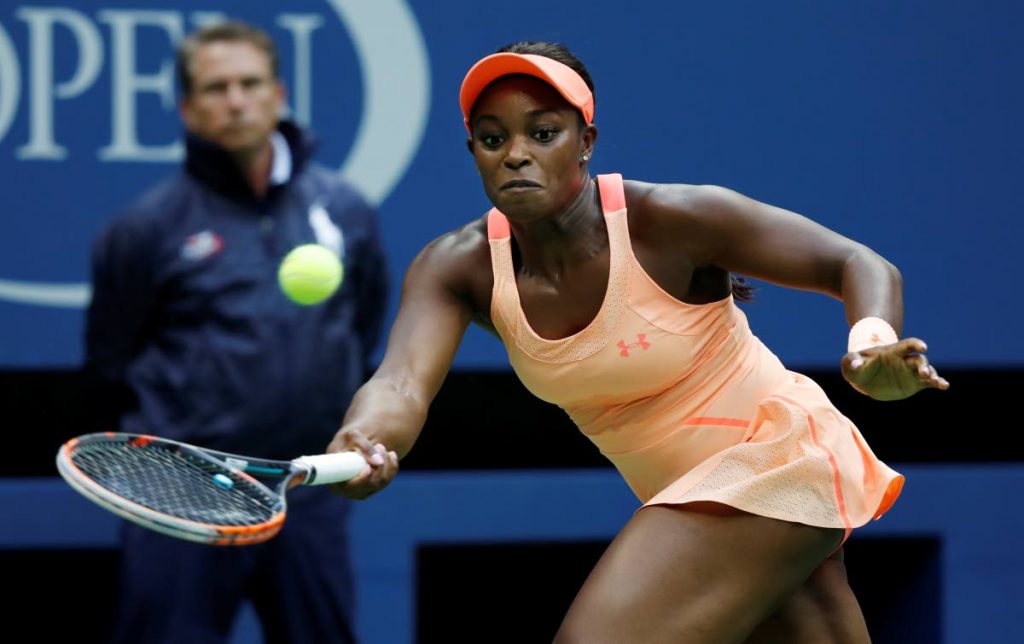Making American tennis great again

As Sloane Stephens scored her match point against Madison Keys last weekend at the US Open Tennis Women’s Finals, my apologies to anyone who takes offence, but the only image that crossed my mind was a racket across Donald Trump’s face.
I couldn’t help but replay those words “We will make America great again,” words that now reek of chronic racism. As Stephens casually made her way over to Keys’ side to sit and chat while waiting for the official trophy ceremony to begin, the innocence of the gesture was difficult to overlook.
It appeared as though this was just another day on the courts rather than the movement of an athlete–an African-American woman and an unseeded player– who had just won her first major Grand Slam. Even the interviewer was compelled to comment by saying that it was the first time he had ever seen someone leave their side of the court to go over to the opponent’s side.
Maybe there was a bit of Americanism in her gesture. Both players have been hailed as the future of American tennis after all. But for me, the irony that African-American players would represent the future of American tennis was humorous (Keys is actually bi-racial but prefers to be identified by her tennis rather than her race). It’s difficult to sidestep the race issue in the world context where race is often conflated with sexism when it comes to women’s tennis in this instance.
Very little was said about race in the commentaries but the battle has been a challenging one. I remember when Venus and Serena burst onto the courts as teenagers in the 1990s. From the start of their careers, the sisters were faced with derogatory comments about their bodies and race. Remarks about their “muscular, man-shaped” bodies have continued over the last two decades, in addition to references to them as “gorillas” and other racist remarks. Ironically, the Williams’ sisters came onto the scene at a time when the debate was about whether tennis had lost its skill and was simply now based on power. Steffi Graf and Pete Sampras were known for it. There seemed to be a loss of skill that the John McEnroe, Jimmy Conners’, Pam Shriver, Chris Evert, Billie Jean King era had shown. The rackets too evolved along with the players’ bodies. Yet the sisters were not spared the disparaging remarks about their bodies.
If the information is right as the Huffington Post and Daily Dot record, Serena Williams, despite beating Maria Sharapova 17 consecutive times still earns at least US$5 million less than Sharapova while, in 2015, The Atlantic reported Sharapova’s earnings via endorsement deals for the year to be US$10 million more than Williams’. This is merely because sponsors are more interested in looks than athleticism, which of course raises an issue that all women should be rallying against. (See The Atlantic August 31, 2015: “Why Doesn’t Serena Williams Have More Sponsorship Deals” for more analysis.)
As if to reiterate the point, the New York Times ran a piece on the top ten female tennis players’ view of their body images in comparison to Serena’s. The comments of Radwanska’s coach are disparaging in themselves and are a further indication of the sexism that runs women’s tennis that also conditions the way that female athletes see themselves:
“It’s our decision to keep her as the smallest player in the top 10,” said Tomasz Wiktorowski, the coach of Agnieszka Radwanska, who is listed at 5 feet 8 and 123 pounds. “Because, first of all she’s a woman, and she wants to be a woman.” (New York Times, July 10, 2015) As if Venus and Serena don’t want to be women?
It is indeed an irony that women’s sports should be burdened with something as abstract as beauty rather than athleticism. And furthermore, that the female athlete’s race should become conflated with her “looks.”
The fact that nothing was said about Sloane Stephens’s body and race is not, in my opinion, based on the growing maturity of the audience as a few journalists have pointed out, but the fact that she fits the stereotype of the feminine.
However today we focus on the fact that Serena and Venus Williams will forever stand out as two of the greatest athletes of the game. Their triumphs against all odds have made them icons for younger players like Sloane Stephens who herself has shown, that she is someone with the potential to be an exemplary athlete. She shines as a symbol of great sportsmanship, pride and hope for a future generation of African-American women and all women who feel the impossibility of success for she has proven that rankings mean nothing in the face of determination, self-confidence and a sheer love for her game.

Comments
"Making American tennis great again"